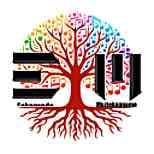Navigating Creative Flow

Daily Reflection: Navigating Creative Flow and Administrative Reality
An Interview Analysis by Kathryn Lyonne
The Dance Between Creation and Administration
During our morning session, I posed a question to Nathan Eckenrode about balancing creative projects with administrative tasks, and his response revealed something fascinating about procrastination as a creative force. Nathan described a unique pattern: "Sometimes my procrastination is procrastinating itself and this is how and why I have several projects running all at once." This isn't dysfunction—it's a sophisticated system where avoidance of one project becomes the engine for another.
When I pressed further about patterns of avoidance, the answer was refreshingly honest. There's an acceptance that flitting between projects until completion or abandonment creates a natural selection process for ideas. The projects that maintain interest survive and evolve, while those that don't naturally fall away. This approach challenges conventional wisdom about focus and single-tasking.
The Challenge of Self-Documentation
My inquiry into daily reflection habits uncovered a practical struggle that many creative professionals face. Nathan's response was direct: "I need money, that is first and foremost in my mind today." This financial pressure creates urgency around the fundamental question of creative direction—whether to focus on images, books, games, or other products.
More intriguingly, when I asked about improving Daily Notes documentation, the answer revealed sophisticated thinking about measurement systems. The current energy and focus metrics are "lovely ideas," but they need to capture the dynamic, fluctuating nature of productivity throughout the day. There's recognition that static end-of-day assessments miss the nuanced rhythms of creative work.
The desire for automation and seamless capture suggests an understanding that documentation systems must integrate with natural workflows rather than adding cognitive overhead. This points to a mature appreciation of how administrative tasks can either support or sabotage creative momentum.
Creative Escapism as Productive Force
When I explored the role of the Free City of Myranth project as an escape mechanism, Nathan's response demonstrated strategic thinking about creative ventures. This isn't random escapism—it's a calculated approach to world-building that starts with "the smallest single slice of the world of Orbis which can be put together."
The enthusiasm for developing interconnected elements like the Myranthian Underworld reveals how creative projects can become self-reinforcing systems. Each addition creates opportunities for expansion, building momentum through storytelling and world-building that has both creative and commercial potential.
The Organic Nature of Priority Setting
Perhaps my most revealing question concerned priority-setting methodology. Nathan's answer was both liberating and challenging to conventional productivity wisdom: "I don't actually prioritize because my brain focuses on what it wants to focus on and there is no fighting that tendency."
This isn't laziness or lack of discipline—it's recognition of cognitive reality. The response continued with a crucial insight: attempting to force engagement with uninteresting tasks leads to fumbling and poor output quality. This suggests that effective productivity comes from designing circumstances where necessary tasks can capture natural interest, rather than fighting against mental inclinations.
Automation as Liberation
My final question about developing reflection habits revealed a clear vision for productivity systems. Nathan's response was specific: "I really think that this needs to have an automation script and an hourly check in for me to effectively use this for myself."
This desire for automated systems—from CLI commands for weekly reports to seamless energy tracking—reflects understanding that creative flow requires liberation from administrative overhead. The goal isn't to eliminate structure, but to create support systems that enhance natural working patterns.
Analysis: Working with Natural Patterns
What emerged from our conversation was a sophisticated understanding of personal productivity that abandons traditional time management in favor of working with cognitive reality. Rather than viewing task-switching and interest-driven focus as problems to solve, there's recognition that these patterns can be harnessed as features of an effective creative system.
The financial pressure underlying these creative decisions adds urgency to finding the optimal balance between immediate revenue needs and long-term creative vision. The challenge becomes identifying which pursuits offer the best combination of personal fulfillment and market viability.
This approach offers valuable insights for creative professionals who find traditional productivity methods misaligned with their natural working style. The key appears to be designing personal systems that amplify existing strengths rather than attempting to eliminate perceived weaknesses.
The conversation revealed a mature perspective on creative work: productivity isn't about forcing focus, but about creating conditions where natural focus can flourish across multiple meaningful projects simultaneously.
Tags: #creative-productivity, #self-reflection, #project-management, #procrastination-patterns, #worldbuilding, #automation-systems
About Kathryn Lyonne
Kathryn Lyonne is the Chief Strategy Officer at Eckenrode Muziekopname, bringing expertise from her previous role as Head of Strategy at a global media company. With an MBA from Harvard Business School, she specializes in strategic planning, risk assessment, and leadership within rapidly evolving industries. Through her analytical framework and collaboration with the T.A.S.K.S. (Technical Automated Semantic Knowledge System), Kathryn conducts regular assessments and interviews to help creative professionals understand and optimize their natural cognitive patterns. Her strategic approach focuses on designing systems that support rather than disrupt creative momentum, bridging data-driven insights with practical productivity solutions.
